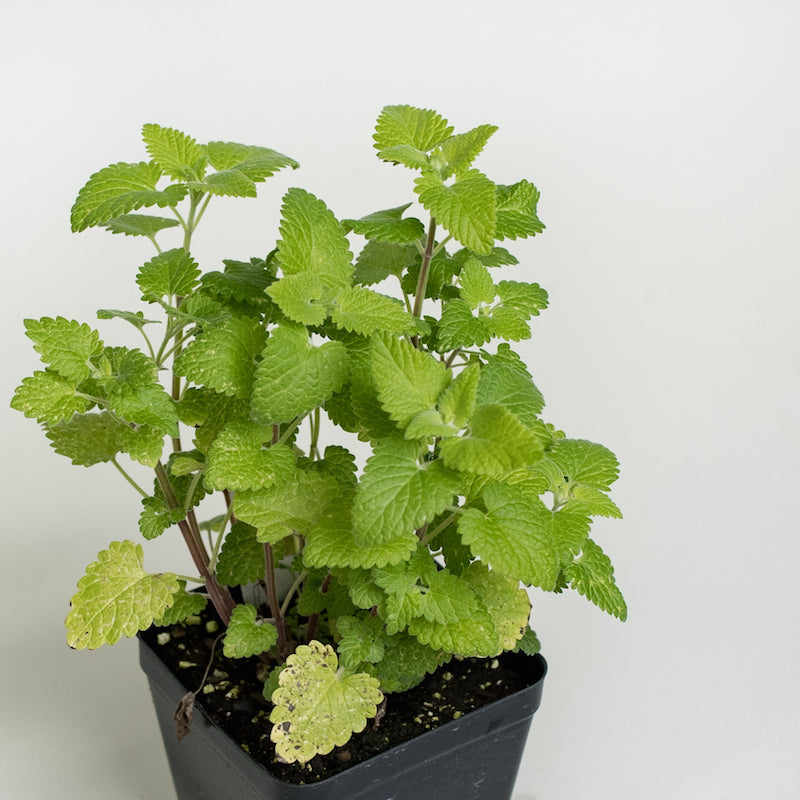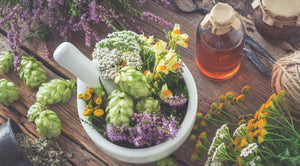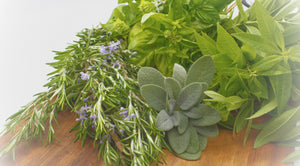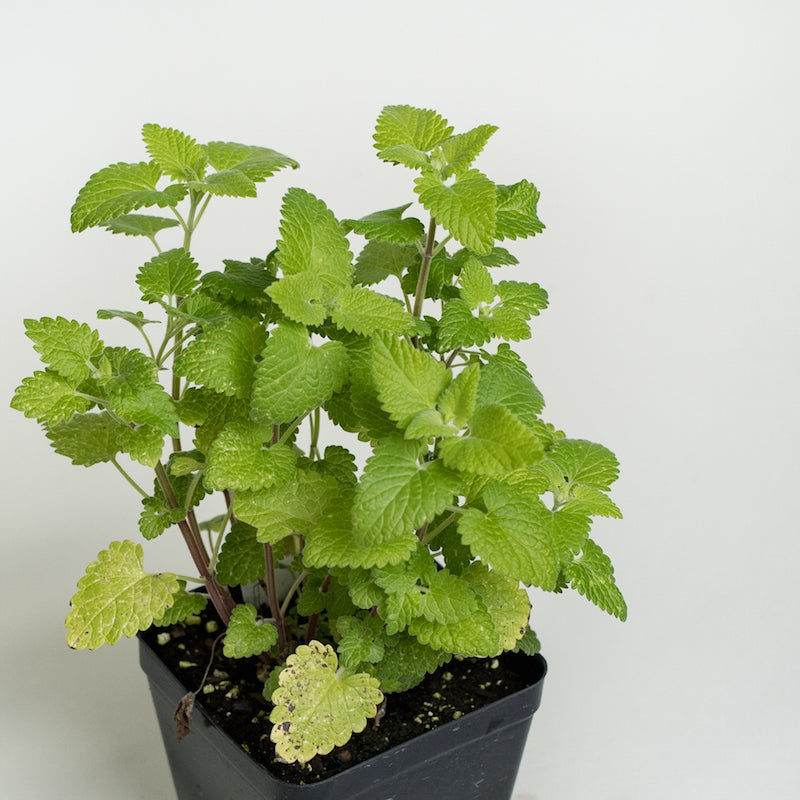-
Catnip Plants for Sale at The Growers Exchange
Catnip, a beloved plant among felines and their owners is a delightful addition to any garden. Easy to grow and care for, catnip plants are suitable for gardeners of all skill levels.
If you're wondering where to buy a catnip plant, The Growers Exchange offers high-quality catnip plants you can readily incorporate into your outdoor or container garden. Read on to learn more about catnip plants!
What Is Catnip?
Catnip, scientifically known as Nepeta cataria, is a perennial herb from the mint family. If your cat could garden, it would definitely be on their list of must-have herb plants!
While catnip is well-known for its euphoric effect on cats, it has many other appealing qualities that make it a great addition to gardens. These include its appearance, potential health benefits, and ability to attract pollinators.
Catnip Appearance and Characteristics
Catnip typically grows to a height of 2-3 feet, with sturdy, square stems characteristic of mint plants. Its leaves are light green, soft, and covered with fine hairs, giving them a slightly fuzzy texture.
The catnip plant's flowers are usually white or lavender and form in small clusters at the ends of the stems. These delicate blooms, as well as catnip's fragrant, heart-shaped leaves, not only add subtle beauty to gardens but, as mentioned, also attract beneficial insects and pollinators like bees and butterflies.
Effects on Cats
The substance in catnip plants that triggers reactions from cats is called "nepetalactone." It is non-toxic, and catnip is safe for your cats, even daily. However, too-frequent use of catnip can make cats desensitized to its effects.
When exposed to catnip, cats typically behave by licking, rolling, drooling, and chasing. However, reactions to this herb may vary among cats, as a response to catnip is hereditary. Not all cats are affected, and it might not affect senior cats and kittens.
Catnip Origins and History
Catnip is native to Europe and Asia but has become naturalized in North America, where it grows wild in many regions. Historically, catnip was valued for its medicinal properties long before it became famous for its effect on cats. It was used in Europe and Asia for centuries to treat various ailments, from digestive issues to respiratory conditions.
The name "catnip" likely originated in Middle English sometime around the 13th or 14th century. While the first part of the name references the plant's effect on cats ("cat"), experts disagree on the etymology of the second part ("nip"). Some say that "nip" could be derived from the Middle English word "nippen," meaning "to pinch suddenly" or "to bite suddenly," which is how cats typically interact with catnip.
Regardless of its name's etymology, one thing is for sure: cats have loved this plant for centuries!
Catnip Plant Care: Growing Tips
Growing catnip is relatively easy, making it an excellent choice for novice and experienced gardeners. Here are some tips to help you cultivate a thriving catnip plant:
-
Soil and Location: Catnip prefers well-drained soil and a sunny location, though it can tolerate partial shade. Ensure the planting site has good air circulation to prevent fungal diseases.
-
Temperature: Herbaceous perennial hardy in Zones 3 to 9
-
Watering: Water daily until established in its new home; they become drought tolerant! Water the plants at the base to keep the leaves dry and reduce the risk of disease.
-
Planting: You can start catnip from seeds, cuttings, or transplants. If using seeds, sow them indoors 4-6 weeks before the last frost date or directly in the garden after the danger of frost has passed. Space the plants about 18 inches apart to allow for proper growth.
-
Fertilizing: Catnip does not require heavy feeding. A light application of a balanced fertilizer or compost in the spring should suffice.
-
Pruning: Regular pruning encourages bushier growth and prevents the plant from becoming leggy. Cut back the stems after the first bloom to encourage a second flush of flowers.
-
Managing Spread: This plant can be invasive. Remove the flowers before they go to seed to prevent it from spreading.
Uses and Benefits of Catnip
Catnip is versatile and offers numerous benefits for cats, humans, and the garden itself.
-
For Cats: As mentioned, the most well-known use of catnip is as a stimulant for cats. You can use fresh or dried catnip to make toys or sprinkle it in your cat's play area.
-
For Humans: Catnip has been used in traditional medicine for its calming effects. A gentle antispasmodic and very mild sedative, it can be made into a tea to help with insomnia, anxiety, and digestive issues. Always consult with a healthcare provider before using catnip medicinally.
-
In the Garden: Catnip is an excellent companion plant. Its strong scent deters pests like aphids, squash bugs, and beetles, making it a natural pest repellent. Additionally, its flowers attract pollinators, which can help improve the yield of nearby fruit and vegetable plants, as well as beneficial insects like ladybugs, which prey on garden pests.
-
Culinary Uses: While not a common culinary herb, catnip can also be used in the kitchen. Its leaves can be added to salads, soups, and stews for a minty flavor, though it's essential to use it sparingly due to its very strong taste.
-
Aesthetic Appeal: Beyond its practical uses, catnip is an attractive plant that adds beauty to any garden. It is also well-suited for growing indoors, providing a touch of greenery and feline entertainment all year round.
Shop for Plants for Your Cats and Your Garden
Catnip is a wonderful plant that brings joy to cats and benefits to gardens and gardeners alike. Whether you're looking to entertain your feline friends, create a more vibrant garden ecosystem, or explore its traditional uses, catnip is a plant worth cultivating. Order catnip plants from The Growers Exchange today.
-
Catnip Plants for Sale at The Growers Exchange
Catnip, a beloved plant among felines and their owners is a delightful addition to any garden. Easy to grow and care for, catnip plants are suitable for gardeners of all skill levels.
If you're wondering where to buy a catnip plant, The Growers Exchange offers high-quality catnip plants you can readily incorporate into your outdoor or container garden. Read on to learn more about catnip plants!
What Is Catnip?
Catnip, scientifically known as Nepeta cataria, is a perennial herb from the mint family. If your cat could garden, it would definitely be on their list of must-have herb plants!
While catnip is well-known for its euphoric effect on cats, it has many other appealing qualities that make it a great addition to gardens. These include its appearance, potential health benefits, and ability to attract pollinators.
Catnip Appearance and Characteristics
Catnip typically grows to a height of 2-3 feet, with sturdy, square stems characteristic of mint plants. Its leaves are light green, soft, and covered with fine hairs, giving them a slightly fuzzy texture.
The catnip plant's flowers are usually white or lavender and form in small clusters at the ends of the stems. These delicate blooms, as well as catnip's fragrant, heart-shaped leaves, not only add subtle beauty to gardens but, as mentioned, also attract beneficial insects and pollinators like bees and butterflies.
Effects on Cats
The substance in catnip plants that triggers reactions from cats is called "nepetalactone." It is non-toxic, and catnip is safe for your cats, even daily. However, too-frequent use of catnip can make cats desensitized to its effects.
When exposed to catnip, cats typically behave by licking, rolling, drooling, and chasing. However, reactions to this herb may vary among cats, as a response to catnip is hereditary. Not all cats are affected, and it might not affect senior cats and kittens.
Catnip Origins and History
Catnip is native to Europe and Asia but has become naturalized in North America, where it grows wild in many regions. Historically, catnip was valued for its medicinal properties long before it became famous for its effect on cats. It was used in Europe and Asia for centuries to treat various ailments, from digestive issues to respiratory conditions.
The name "catnip" likely originated in Middle English sometime around the 13th or 14th century. While the first part of the name references the plant's effect on cats ("cat"), experts disagree on the etymology of the second part ("nip"). Some say that "nip" could be derived from the Middle English word "nippen," meaning "to pinch suddenly" or "to bite suddenly," which is how cats typically interact with catnip.
Regardless of its name's etymology, one thing is for sure: cats have loved this plant for centuries!
Catnip Plant Care: Growing Tips
Growing catnip is relatively easy, making it an excellent choice for novice and experienced gardeners. Here are some tips to help you cultivate a thriving catnip plant:
-
Soil and Location: Catnip prefers well-drained soil and a sunny location, though it can tolerate partial shade. Ensure the planting site has good air circulation to prevent fungal diseases.
-
Temperature: Herbaceous perennial hardy in Zones 3 to 9
-
Watering: Water daily until established in its new home; they become drought tolerant! Water the plants at the base to keep the leaves dry and reduce the risk of disease.
-
Planting: You can start catnip from seeds, cuttings, or transplants. If using seeds, sow them indoors 4-6 weeks before the last frost date or directly in the garden after the danger of frost has passed. Space the plants about 18 inches apart to allow for proper growth.
-
Fertilizing: Catnip does not require heavy feeding. A light application of a balanced fertilizer or compost in the spring should suffice.
-
Pruning: Regular pruning encourages bushier growth and prevents the plant from becoming leggy. Cut back the stems after the first bloom to encourage a second flush of flowers.
-
Managing Spread: This plant can be invasive. Remove the flowers before they go to seed to prevent it from spreading.
Uses and Benefits of Catnip
Catnip is versatile and offers numerous benefits for cats, humans, and the garden itself.
-
For Cats: As mentioned, the most well-known use of catnip is as a stimulant for cats. You can use fresh or dried catnip to make toys or sprinkle it in your cat's play area.
-
For Humans: Catnip has been used in traditional medicine for its calming effects. A gentle antispasmodic and very mild sedative, it can be made into a tea to help with insomnia, anxiety, and digestive issues. Always consult with a healthcare provider before using catnip medicinally.
-
In the Garden: Catnip is an excellent companion plant. Its strong scent deters pests like aphids, squash bugs, and beetles, making it a natural pest repellent. Additionally, its flowers attract pollinators, which can help improve the yield of nearby fruit and vegetable plants, as well as beneficial insects like ladybugs, which prey on garden pests.
-
Culinary Uses: While not a common culinary herb, catnip can also be used in the kitchen. Its leaves can be added to salads, soups, and stews for a minty flavor, though it's essential to use it sparingly due to its very strong taste.
-
Aesthetic Appeal: Beyond its practical uses, catnip is an attractive plant that adds beauty to any garden. It is also well-suited for growing indoors, providing a touch of greenery and feline entertainment all year round.
Shop for Plants for Your Cats and Your Garden
Catnip is a wonderful plant that brings joy to cats and benefits to gardens and gardeners alike. Whether you're looking to entertain your feline friends, create a more vibrant garden ecosystem, or explore its traditional uses, catnip is a plant worth cultivating. Order catnip plants from The Growers Exchange today.













 Medicinal
Medicinal
 Deer Resistant
Deer Resistant
 Aroma
Aroma
 Pollinator
Pollinator
 Indoor
Indoor
 Drought
Drought